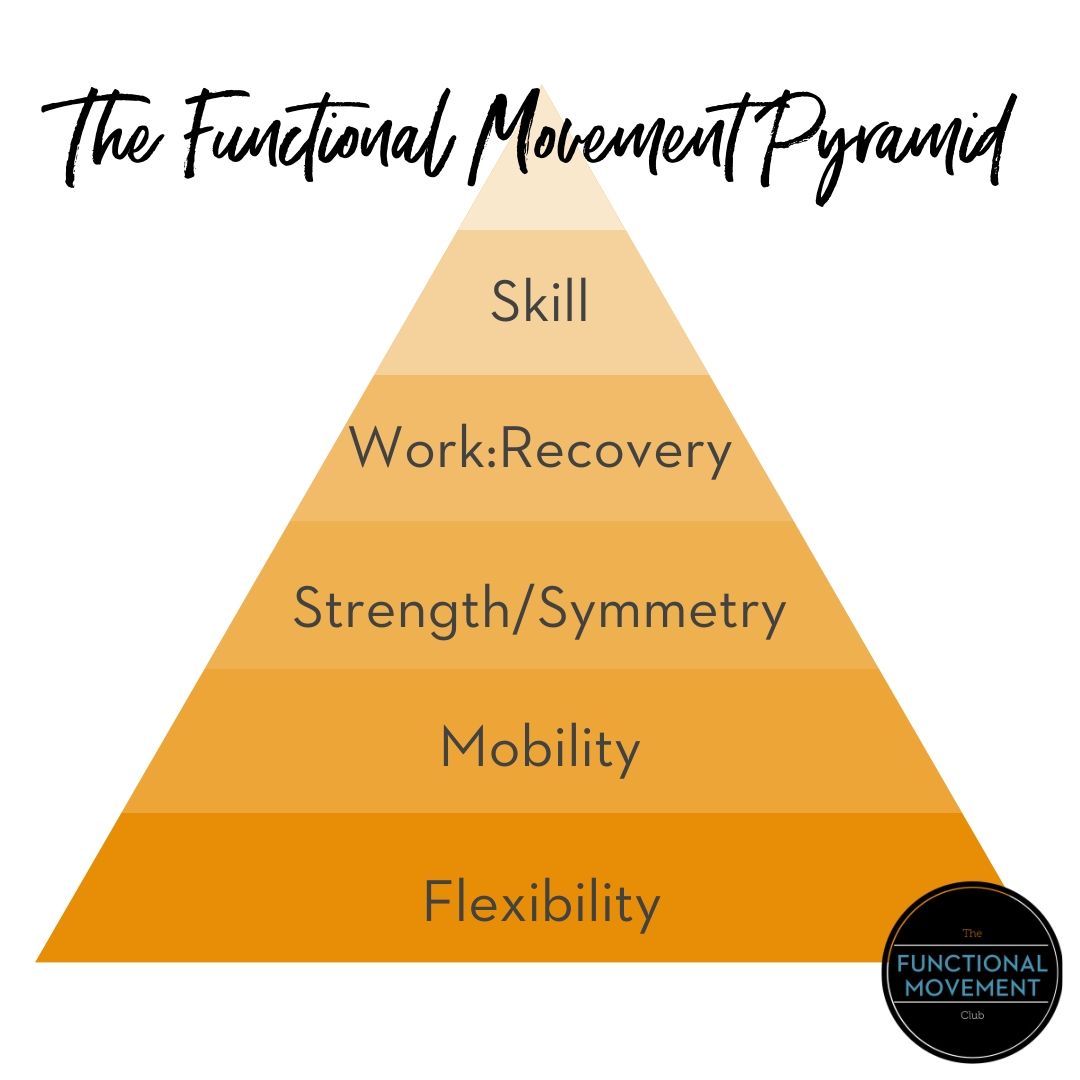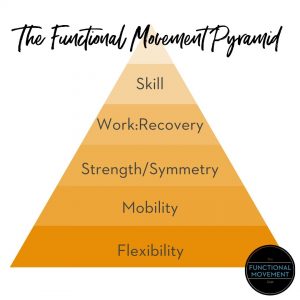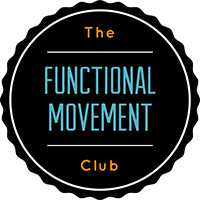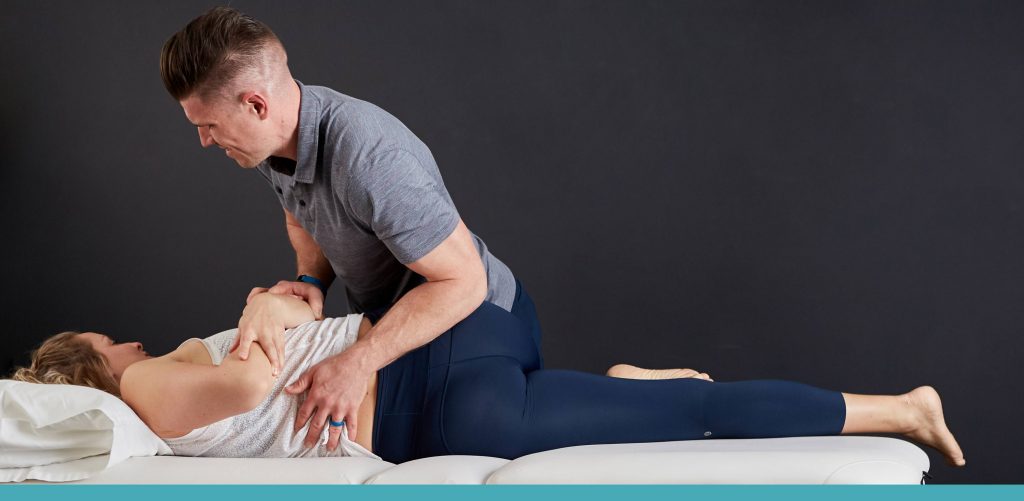
The Functional Movement Pyramid.
Why A Functional Movement Pyramid?
When it comes to functional movement (and everything in life really) If you don’t have a system in place you’re really just guessing. The major components of any movement or exercises are flexibility, mobility, strength/Symmetry, adequate work to recovery ratios, and finally the skill capacity. To be able to execute a movement or workout you need all of these parts to be working. If you are lacking in any of them. It is just a matter of time before you get injured.
How much of a discrepancy will determine how long you can compensate before issues begin to arise. Not all areas are created equal though. You will never be able to execute the skill properly without all the areas underneath working properly. (That’s why we made a simple diagram for you to follow along with).
PSST . . . Heres a FREEBIE I made for you
Not All Components Are Created Evenly:
The order of your functional movement needs are as follows:

Flexibility: Flexibility refers to passive joint range of motion. How much do your joints move under the force of gravity or an external force (without you doing anything)? All the mobility drills in the world will just be a waste of time if you don’t have the flexibility to be able to get into that position. Flexibility is the first thing you need to tick off otherwise you are just building dysfunction on top of dysfunction. You will only have to go back and clean it up in the future once you hit your ceiling for the movement/exercise.
Mobility: How far can you move a joint actively? This will help you determine if you need to get more flexible or stronger in a range of motion. If you need more mobility (passively you can get there but for some reason, your body can’t make you do it), then you need to do some strengthening drills and stretching is just a waste of time.
If you can passively go through this range but, cant actively do it, it’s a waste of time stretching.
Strength/Symmetry: Symmetry between each side. If you have greater than a 10% difference from one side to another you are more likely to favor that one side. Favoring one side over time will cause that gap in strength to widen, leading to an increase in the risk of injury. Either the strong side gets angry because it feels it’s doing all the work. Or, your weaker side can’t handle the load anymore and rips tears or breaks.
You need to clear each level before you move on to the next. If you drop forward in your squat through your trunk, and we just give you core strengthening exercises but its actually your ankle ROM than you will never get any improvement and it will never help you with your squat. This is why you have to start at the bottom and work your way up The Functional Movement Pyramid.
Work/Recovery: This is probably the lowest hanging fruit for you, but something you are leaving on the table each and every day. What do you think of when you think recovery?
If you said laying on the couch doing nothing, binge-watching Netflix. You’d be sorely wrong. That is rest. Rest is typically passive. Recovery is active and with intent. While rest can be sitting on the couch, or taking a day off. Recovery is coming into the gym and doing an easy 5km row, a brisk 30-60 min walk. Some Yoga, or pilates, technique work with low weights, or a low-intensity workout.
I hated maths in school so I’ll keep this equation pretty simple. Training is -1 if you train 2 days on 1 day off your recovery needs to be 3+ otherwise you are working at a deficit and are always running at a loss.
-1-1+3=1
The Workout: Recovery Ratio:
That means for every 2 days of working out (roughly given your previous training history) you should be taking an active recovery day. Even if you are stationary the world keeps moving which means you are still going backward.
You might be thinking “but working out is a stress release”, yes mentally, but not physically. It’s one of the most intentional stressors you will put your body through in a day.
Do you ever wake up and say I’m just gonna go to work get my heart rate up really high until I go read in the face, get really sweaty then have to lay down for 5 mins after a really tough day at work? I didn’t, think so. If you aren’t recovering enough, eventually your bucket will fill up. It will start overflowing with pain and injuries.
Skill: Skill sits at top of the hierarchy. And, the last thing you should work on. For me Practicing a handstand push-up was pointless until I had adequate shoulder range of motion and strength. I would just kick up into a handstand then fall straight back down because I hadn’t worked through the hierarchy of functional needs properly.
Building A Solid Pyramid:
If you think about functional movement like the pyramid above you will start to develop a strong foundation, one you can build a super-strong pyramid on. If you have a soft sandy base your house will get washed away the first time the tide comes in. Start bottom-up because you are more likely to fail and miss the root cause. You can break bad habits, be intentional and build quality movements (foundations)
What Next?
These create your functional movement diagnosis and sleep diet stress diagram from a load capacity diagram (which you can read more about here).
If you want more help with your Flexibility or mobility our Targeted Mobility Program is a great place to start, it has test before an after to make sure are making progress and not doing mobility for mobility sake. It also has both flexibility and mobility work included so you can just straight into working on your strength symmetry.






